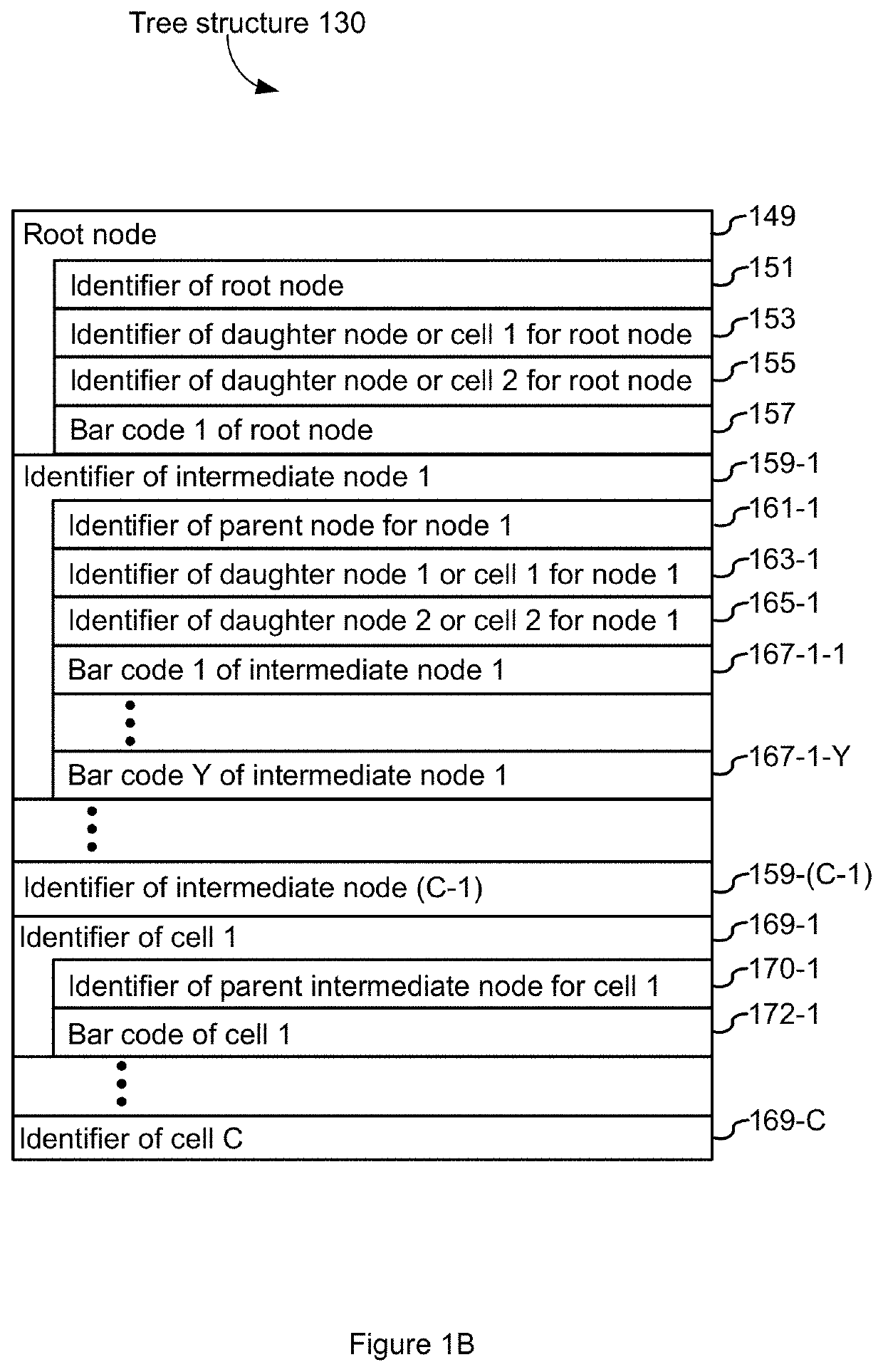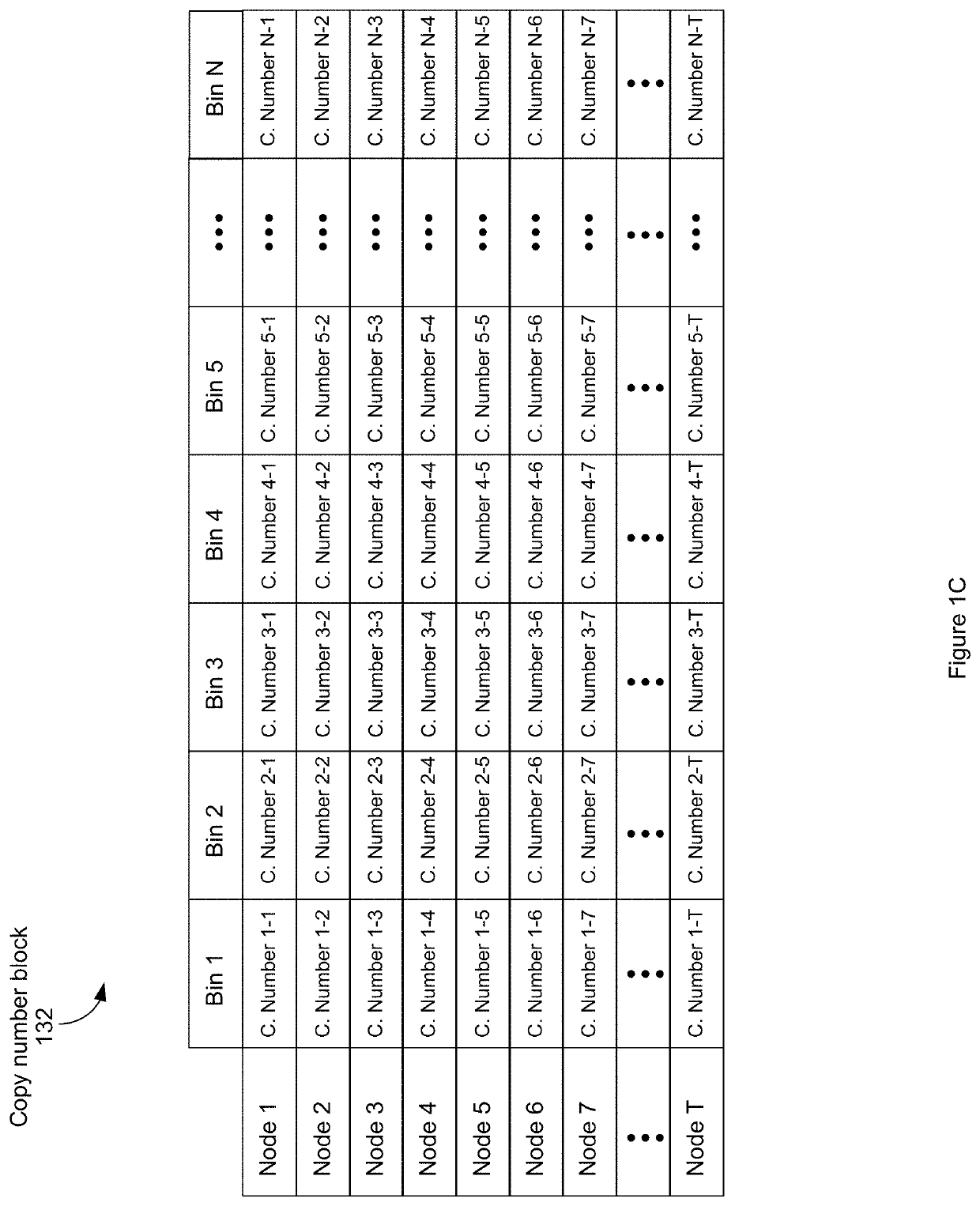Systems and methods for visualization of single-cell resolution characteristics
a single-cell resolution and characteristic technology, applied in the field of visualizing patterns, can solve problems such as complex sequence datasets
- Summary
- Abstract
- Description
- Claims
- Application Information
AI Technical Summary
Benefits of technology
Problems solved by technology
Method used
Image
Examples
example 1
Sequence Reads
[0112]The analysis module 122 reads and analyzes single cell sequencing datasets 128 in the manner set forth in FIG. 2 and described above. This example provides non-limiting examples of how such single cell sequencing datasets 128 are acquired and how they are barcoded. In some embodiments, such analysis is done by a pipeline that is run before the analysis module 122 loads a dataset 128.
[0113]In some embodiments, single cell sequencing is performed as disclosed in U.S. patent application Ser. No. 15 / 887,947, entitled “Methods and Systems for Droplet-Based Single Cell Barcoding,” filed Feb. 2, 2018 (the '947 application), which is hereby incorporated by reference. For instance, the '947 application discloses the production of one or more droplets containing a single cell bead and a single barcode bead. The systems and methods disclosed in the '947 application also allow for the production of one or more droplets containing a single cell bead and more than one barcode ...
example 2
g for GC Bias
[0122]The observed coverage per cell for a fixed bin 126 is influenced by both (i) bin mappability, on the basis that regions with low mappability produce fewer read pairs, (ii) bin GC content, on the basis that a drop in coverage in regions of very low or very high GC content, (iii) scale factor, that is, the number of read pairs generated by a single fragment of DNA in a partition, which is a function of both the underlying library complexity and the sequencing depth, and (iv) bin copy number on the basis that bins that have high copy number have high coverage. These effects can be incorporated into a generative model where DNA in a fixed, unknown copy number state “emits” read pairs that are observed according to a Poisson distribution. The mean of the Poisson distribution is determined by the product of the copy number, the effect of GC content, the mappability, and the scale factor:
Xi˜Poisson(S piQ(gi)mi)
[0123]where i is an index over all the mappable bins, X is th...
PUM
| Property | Measurement | Unit |
|---|---|---|
| heat map | aaaaa | aaaaa |
| heterogeneity | aaaaa | aaaaa |
| genomic heterogeneity | aaaaa | aaaaa |
Abstract
Description
Claims
Application Information
 Login to View More
Login to View More - R&D
- Intellectual Property
- Life Sciences
- Materials
- Tech Scout
- Unparalleled Data Quality
- Higher Quality Content
- 60% Fewer Hallucinations
Browse by: Latest US Patents, China's latest patents, Technical Efficacy Thesaurus, Application Domain, Technology Topic, Popular Technical Reports.
© 2025 PatSnap. All rights reserved.Legal|Privacy policy|Modern Slavery Act Transparency Statement|Sitemap|About US| Contact US: help@patsnap.com



